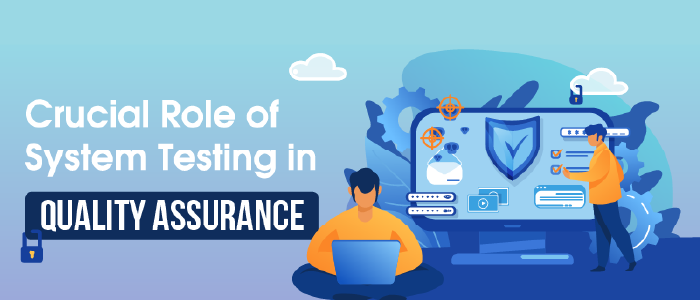Critical Role of System Testing in Achieving Quality Assurance

In the ever-evolving field of software development, ensuring the highest quality of a product is paramount. This is where System Testing emerges as the ultimate safeguard, serving as the final gatekeeper before software makes its way to the public domain. We understand the paramount importance of this phase and offer outsourcing solutions that elevate your software’s reliability through effective system testing.
System testing is not merely a formality; it’s a comprehensive process aimed at end-to-end verification, error identification, and defect prevention. Our expertise is dedicated to ensuring that your software meets the highest standards of quality, providing users with a seamless and satisfying experience.
Objectives of System Testing:
- Risk Reduction: System testing is strategically designed to mitigate risks associated with software deployment. By thoroughly testing the entire system, we identify potential vulnerabilities, ensuring a robust and secure end product.
- Defect Prevention: Unearth defects before they become critical issues. Our systematic approach to system testing identifies and addresses glitches, preventing them from reaching the end-user and ruining your software product’s reputation.
- Design Verification: To validate that the software aligns with its intended design and specifications, our meticulous testing processes guarantee that your software not only functions as intended but also adheres to the defined design principles.
Different Types of System Testing:
- Usability Testing: Enhances user satisfaction by ensuring an intuitive and user-friendly interface.
- Regression Testing: Guarantees that new changes do not adversely affect existing functionalities.
- Performance Testing: Validates the system’s responsiveness and stability under various simulated conditions.
- Functional Testing: Ensures each function of the software operates as expected without errors.
- Recovery Testing: Assesses the system’s ability to recover gracefully from failures.
- Migration Testing: Verifies smooth data transition between different environments.
- Hardware/Software Testing: Confirms seamless integration between hardware and software components.
Each type of system testing plays a crucial role in enhancing software quality, contributing to a positive user experience, and consolidating your software’s reliability in the market. To put it briefly, outsourcing quality assurance and testing services for software applications is a strategic move for organizations committed to delivering exceptional products.


